 We know very little about JB and his life. We don't even fully know his name, beyond his initials, nor how he related to the Walton family.
We know very little about JB and his life. We don't even fully know his name, beyond his initials, nor how he related to the Walton family.
We do know that his life was either violent or involved some kind of risky activity. His skeleton revealed a mess of healed fractures, as well as several broken ribs. His knee had once been hit so hard that an area of bone (30mm in diameter) remained permanently crushed.
JB would have been subject to a lot of aches and pains. Periostitis inflamed his joints, rendering them prone to swelling and increasingly painful to move. He also suffered from mild osteoarthritis in his back. All of this before the tuberculosis came, which took his life aged 55.
But not everything was bad. There's a strong likelihood that the woman buried beside him was his wife. Her initials were IB. Unfortunately, she was only 45 when she died. They also had at least one child. Thirteen year old NB was laid to rest beside her parents.
They all perished during the 1830s. Each of them was placed into a stone coffin. Tacks on the lid spelt out their initials and ages. That's how we know them. His read JB: 55.
What was remarkable was what happened next. At some point after burial, JB's body was dug back up and mutilated. Those broken ribs, it turned out, had happened five years after death. Someone had smashed through after JB's heart. Moreover, the cranium had been very deliberately sliced from his head, presumably to remove his brain. His feet and shins remained in place, but the thigh bones were removed and crossed over his chest. His skull was placed on top.
It looked like the device on the Jolly Roger flag, so beloved of pirates. But this was nothing to do with the ocean. JB was so arranged because someone somewhere thought that he was a vampire. The good folk of Connecticut, during the early 19th century, were just trying to protect themselves.
The body of JB isn't with the rest of his kin, in the cemetery at Hopeville, Griswold. He alone was taken to the National Museum of Health and Medicine, in Washington D.C., where he still remains.



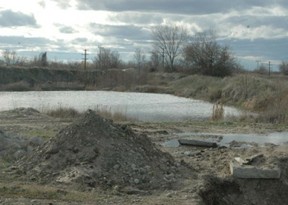 In November 1990, a group of children were playing in the grounds of a sand and gravel company. Suddenly the ground gave way.
In November 1990, a group of children were playing in the grounds of a sand and gravel company. Suddenly the ground gave way.


 We know very little about JB and his life. We don't even fully know his name, beyond his initials, nor how he related to the Walton family.
We know very little about JB and his life. We don't even fully know his name, beyond his initials, nor how he related to the Walton family.
 On June 8th 1854, a terrible procession entered the graveyard at Jewett City, Griswold.
On June 8th 1854, a terrible procession entered the graveyard at Jewett City, Griswold.


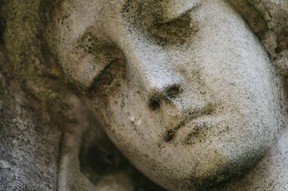 There had once been six sisters, now there was only one. We don't know her name, just that she lived in West Stafford, Connecticut; and like her sisters before, she'd contracted 'galloping' consumption.
There had once been six sisters, now there was only one. We don't know her name, just that she lived in West Stafford, Connecticut; and like her sisters before, she'd contracted 'galloping' consumption.





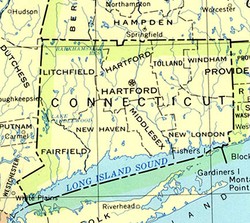

 St Tydecho's Churches in West Waleson 09/03/2014
St Tydecho's Churches in West Waleson 09/03/2014
 Goodies for an Outlander Premiere Partyon 03/06/2015
Goodies for an Outlander Premiere Partyon 03/06/2015
 Holocaust Memorial Day Interview with Rainer Höss, Grandson of Rudolf Architect of Auschwitzon 01/24/2015
Holocaust Memorial Day Interview with Rainer Höss, Grandson of Rudolf Architect of Auschwitzon 01/24/2015
 Romantic Valentine Gifts for an Outlander Fanon 01/16/2015
Romantic Valentine Gifts for an Outlander Fanon 01/16/2015

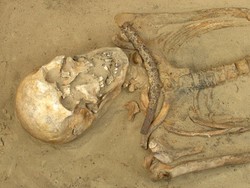
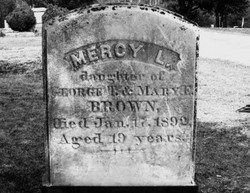
Comments
I'd love to come with you to look around the vampire sites! Unfortunately, I'm on the wrong continent. My apologies for the delayed reaction, I've been on vacation and only just returned.
I know the vampire crazy is huge. I would also like to visit Connecticut.
It's believed that we've only just scraped the tip of the iceberg. It happened all over New England, with one case as far west as Minnesota. The feeling is that there would have been many, many more cases. But this happened mostly out of sight in rural communities, so there is no record. It would have gone much further in Connecticut.
Jo, I live in Connecticut and never knew about this vampire craze. Thank you for writing about it. Do you know if the craze was only in the two towns mentioned or did it go further in Connecticut.
Hopefully we'll get something like nanos from Dr Who within the next 50 years. They'll fix us to optimum health, whenever we start to fail. :D
I know what you mean about many vampire stories being ridiculously similar. They were all trying to reproduce Dracula ad nauseam at one point. It all gets much more interesting when other aspects are explored, like civil rights (True Blood), immortality (Vampire Chronicles) and half-human/half-vampire hybrids (Blade).
I'm also enjoying chasing down the origins of some of our biggest mainstays. Most of it's Bram Stoker, but some have really surprising origins. Like Coleridge thinking that Wordsworth was a vampire. It's like bits like that which make all this research worth it.
I currently have 24 vampire articles. I could write another 24 on top of that. I'm enjoying the journey.
Yeah that makes sense. I think on some level I would have to actually believe that something would help before I'd go for it, but the desperation to save a family member's life definitely makes sense. I can't imagine knowing you have an illness that means you're going to die, sooner or later. Cancer is scary and it isn't nearly as fatal as TB once was, by a long shot. And on top of that, despite having no understanding of bacteria really, they knew well enough that it would spread, the idea back then mostly was that it happened spontaneously, or that people were breathing bad air (miasma theory). Microbes were discovered in the 1600s (alongside discovery/invention if the microscope) but it wasn't until sometime in the 1800s that people even started connecting microbes to illness. Beyond that all kinds of beliefs came into play as to why people got sick. Then germ theory started developing after microbes were discovered and things like the miasma theory developed and the idea that microbes spontaneously generated. Then in the 1800s persons like John Snow and Edwin Chadwick practically invented public health and environmental/occupational health. Then it was like the 1900s hit, and science and medicine couldn't be stopped, and not only that but we got the FDA, occupational safety, public health, environmental health all within the first 20 or 30 or so years of the 1900s. I just find it bizarre and fascinating. It makes me wonder where science will be in the next 50 years even. I like science :|
When I was a kid there was a short period of time that I'd read a bunch of different vampire books, and after a bit I just got really bored and couldn't seem to get past the start of them anymore...they never seemed to be very scary at all, and they were, at the core of it, all the same story pretty much. I was over it. So, I dunno, I'd always been pretty disinterested in vampire stories. That's why I hadn't been terribly interested in reading articles about vampires... I was secretly surprised that you were still writing vampire articles. Like, how many do you have now? >.>
But I'm really glad I stopped to read this, it was genuinely very interesting. And, not too surprisingly, there is clearly a lot more out there than the conclusions I had drawn as a kid. So, that's what I get for making assumptions and being picky :p
Thank you for writing it ^_^ and for the discussion! I'll be reading others.
The only family for which I can answer with some certainty is that of the Brown family in Rhode Island. They were casually religious, as in not enough to undertake a very, very long walk each Sunday to go to chapel. Shortly before Mary died, she did take that journey. She was suffering so badly with TB, she thought it might help. It didn't.
Their father later agreed for his wife's body, and his daughters Mary and Mercy's bodies, to be exhumed. But he personally didn't believe in vampires. His neighbours were so adamant that he gave in simply to appease them. Plus his son Edwin was dying and there was nothing he could do. Maybe a small part of him did hope that there was something in the vampire legend, and that he could save Edwin.
Often these things happen because the families don't want to leave any stone unturned. If there's at least a chance to save a loved one, wouldn't you take it?
As for the Somali TB sufferers, that sounds like it was a sensible way to approach the issues.
I'd be interested in knowing what the families from your articles really believed about vampires. Were these people still pretty religious, like the groups that carried out the witch hunts in the US? In which case- what did they believe actually happened to their loved ones? Not just physically but spiritually as well.
I'm pretty sure a big cohesive set of health education, and public health practices were put into play, as well as within hospitals just making sure to provide care as holistically as possible, to do what they could to reassure the patient and their families of their safety, and respecting their culture while still upholding their oaths as doctors. So, doing things such as bringing in religious elders or if the family wanted like a witch doctor of sorts, and doing everything they possibly could to break down communication barriers. I guess it really came about when you had Islamic converts, who particularly picked up the notion of an angry punishing god, without necessarily taking out the culture and religious history (which included things like magical practices, and voodoo). And otherwise I think it was case by case.
I didn't know about any of that. It just shows how these concerns go on and on. It's only one step from 'being cursed' to 'being a vampire'. Thank you for sharing that with us.
What did the ethic boards decide in the end? At least for the majority of cases?
Ah, well I'm familiar with the fact that Somalians use witchcraft and/or witch doctors in medicine, and fully believe a person can be cursed and that there are very specific ways in which someone who has been cursed must be dealt with. TB is one of those for Somalians, and I believe the word they use for the illness either means possessed by evil spirits, and the other kind of expresses the idea that the person is deathly ill and will/must die alone. (If I remember correctly, might have to look that up.) They have a few specific medical practices for dealing with TB, but for the most part if it is believed the person became cursed by their own misdeed or disbelief then they could not, or should not, be cured and must suffer their punishment.
It became an issue when the US started having Somalian refugee camps. If someone came down with TB, their families would try to communicate to western doctors that the person would die, while doctors are going 'no! no one should ever die of TB these days!' leaving the families terrified they were all about to be cursed themselves. Most often, the ill person themselves would refuse treatment, depending on exactly why they believed they were sick, but chances were it was because they felt they'd been cursed. In their eyes, the moment they became ill, they were already dead, in the eyes of their family and community, where they'd now never be welcomed back. It was their wish, because of religion, if you will, to go untreated. In the US, a patient has every right to refuse treatment... Unless an ethics board determines the person is unfit, mentally, emotionally, or otherwise, to make that decision. It became a huge ethical issue, which case by case ethics boards had to debate down the line on what the correct thing to do was- disrespect their culture and save a life, or grant the person and their family their wishes. One thing to keep in mind is that if the ethics boards were to help this person, they no had to follow it all the way down the line, he/she would be a refugee that would no longer be accepted back into their small community...could they be helped to integrate into Western life after being shunned by their community and refugee camp? Or would they end up killing themselves down the line regardless? It is an interesting debate.